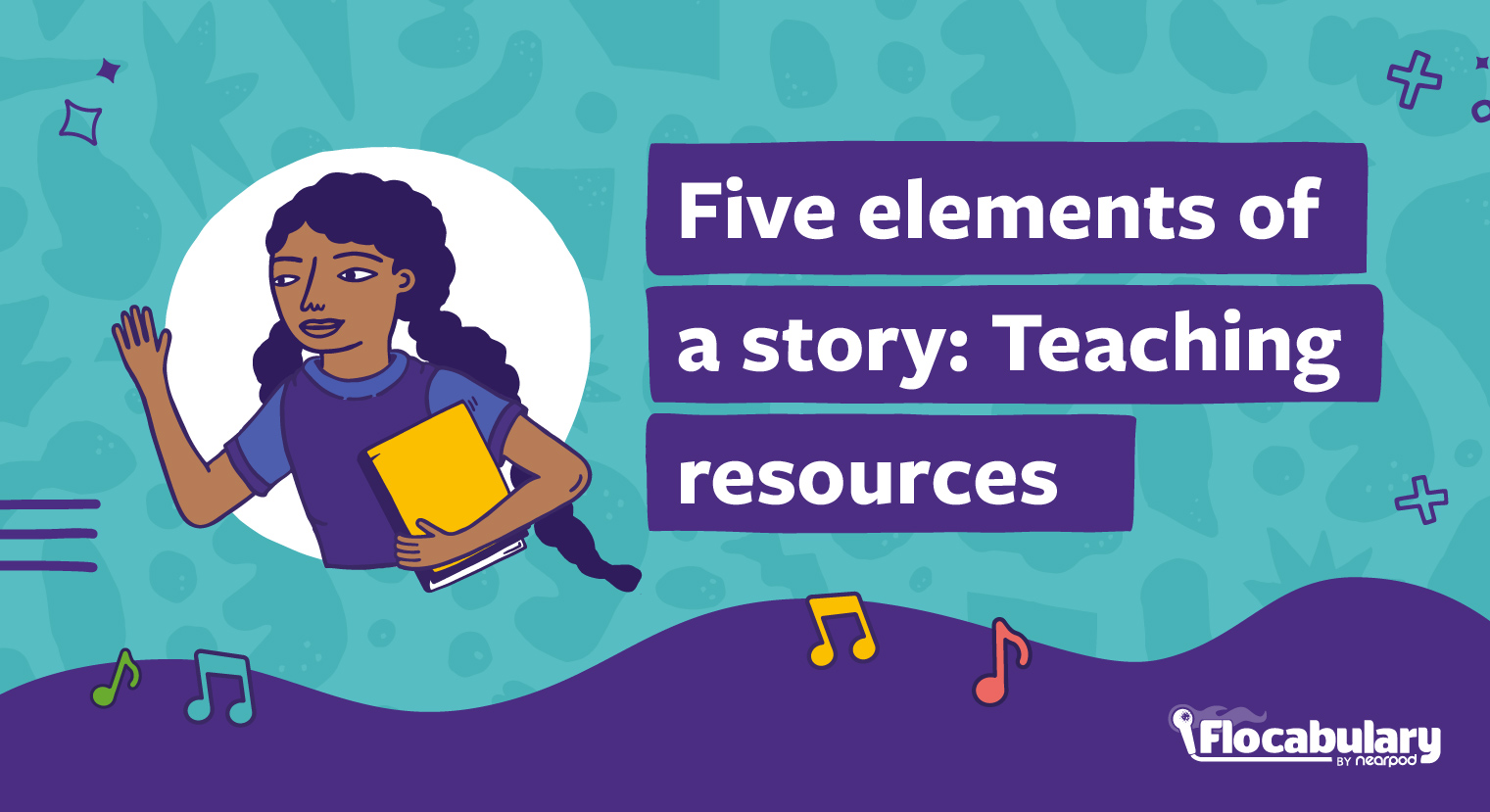
Five Elements of a Story: Teaching Resources
Recognizing story elements is a key reading comprehension skill and can help students build a lifelong love of literature. Both fiction and nonfiction stories pique our interest, rouse our emotions, and keep us invested in the topic at hand—whether it’s a history lesson, a math problem, or an ELA skill. And as we know, engagement is a core indicator of student success. But stories don’t just appear out of thin air: The good ones contain five key story elements: plot, setting, character, conflict, and theme.
Stories and story elements have always been at the heart of Flocabulary. Keep reading to explore five fun ways to teach this with Flocabulary’s lesson resources.
What are the 5 elements of a story?
“Plot, Character, Conflict, Theme,
Setting, yes, these are the 5 things
That you’re going to be needing
When you’re reading or writing
A short story that’s mad exciting.”
These are lyrics from Flocbulary’s Five Elements of a Story video, which has been a teacher and student favorite since its debut, and for good reason. The song’s hook clearly and succinctly lays out the five elements of a story in a catchy way that students will remember.
@Flocabulary is my favorite source to use to hook my kids and introduce a topic. Yesterday we learned about the 5 elements of a story. #res3grit #RobinsonISD @ElemRob pic.twitter.com/tPioKFSdDh
— Debra Matus (@DebraMatus) November 5, 2019
Five Elements of a Story: Teaching Resources
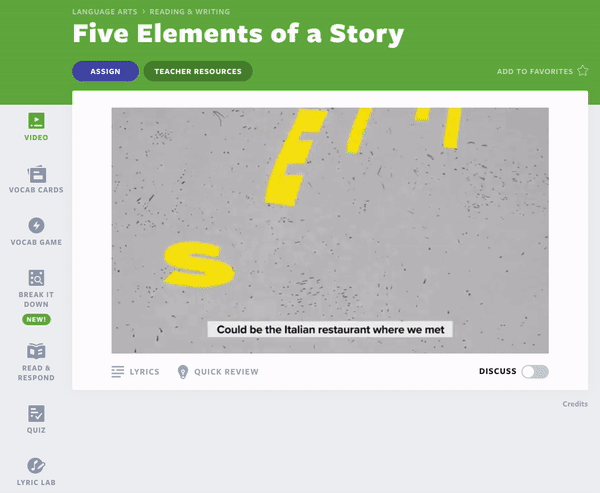
1. Introduce story elements by watching our educational hip-hop video, Five Elements of a Story
This Five Elements of a Story video has been a teacher and student favorite since its debut, and for good reason: The song’s hook clearly and succinctly lays out the five elements of a story in a catchy way that students will remember.
Use our standards-aligned lesson plan to guide students through the video, printable worksheet, and an optional extension activity to further support discussion and understanding.
Lesson sequence for The Five Elements of a Story
The Five Elements of a Story video comes with the complete suite of lesson resources that Flocabulary teachers know and love. Here’s how you can use each part of the lesson to teach what the 5 elements of a story are:
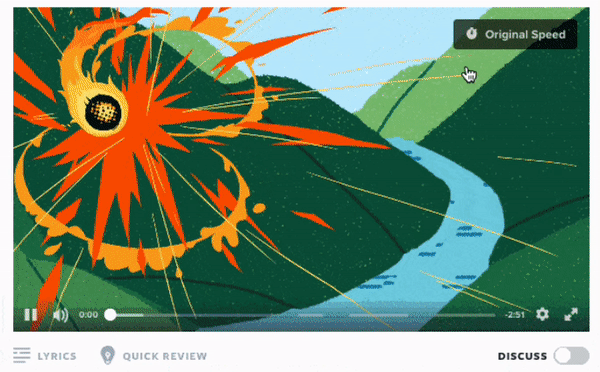
- Video – Play this fully illustrated and animated video for the whole class. Teachers can slow down the playback speed, print out the lyrics as a PDF, and point to the subtitles to help students of all levels fully comprehend the lesson.
- Discuss Mode – Teachers can toggle on a series of open-ended discussion questions to inspire classroom conversation about story elements. For example, one question prompts students to describe the plot of a book they recently read or a movie they watched.
- Vocab Cards – Students can study seven Tier 3 vocabulary words that are integral to learning about the five elements of a story. Teachers can assign students to draw a picture or write a sentence using each word to demonstrate mastery of the vocabulary.
- Vocab Game – Students can play this fun, interactive game individually, in small groups, or as a whole class on a smartboard. With each correct answer, they work toward building a complete hip-hop beat.
- *NEW* Break It Down – This feature lets students gather text evidence directly from the video and explain how it supports their answer to a question.
- Read & Respond – Custom-written reading passages and standards-aligned questions reinforce the information from the video and let students practice reading comprehension.
- Quiz – This 10-question, multiple-choice quiz assesses what students learned from the video.
- Lyric Lab – Students can use the vocabulary and information they learned to create their own rhymes.
- Printable Activity – On this printable worksheet, students answer the question, “What are the 5 elements of a story?” They can either analyze a story they recently read or plan out their own story.
2. Use Flocabulary Mix to have students identify elements of a story
Flocabulary Mix is an innovative mix-and-match collection of skill videos and video texts for grades K-12, available only to Flocabulary Plus subscribers. Teachers can pair a specific, standards-aligned ELA skill (like Main Idea or Author’s Purpose) with a video text that’s tailor-made for students to practice that skill. We’ve written a mix of fiction and nonfiction texts for a total of over 300 unique “mixes.”
How to use Flocabulary Mix
Flocabulary Mix is also an ideal way to practice identifying story elements. Let’s look at the lesson “Theme.” We’ve scaffolded this story element into standards-aligned skill videos for grades 2 through 12 that can be paired with a grade-appropriate text video. For example, the grade 2 skill video is called “Moral of the Story.” A host describes what a fable is and explains that authors often include big life lessons in their stories. Students can then apply what they learned by watching a video text and identifying its theme.
Skills and texts are appropriate for older students, too. 11th and 12th graders can watch a skill video about “Interaction of Themes,” which explains that stories often have more than one theme—and these themes can build on each other to add complexity and deeper meaning. For example, one theme in William Shakespeare’s Romeo and Juliet is that too much passion is dangerous, as when the priest observes that “Violent delights have violent ends.” But another theme is that passion is life-giving. As Juliet says, “The more [love] I give to thee, the more I have, for both are infinite.” These opposing themes encourage deeper thinking and create tension that raises an essential question —and a third theme: How can we balance passion with temperance?
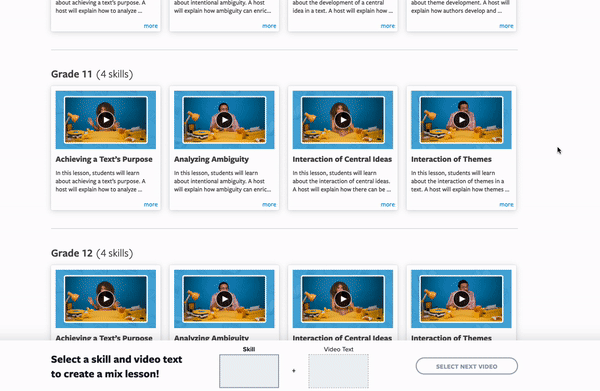
Video texts also become more complex for older grades; teachers can pair this skill video with a literary nonfiction text about Holocaust hero Irena Sendler, an adaptation of O. Henry’s short story “The Gift of the Magi,” an original science-fiction story called “Pit,” and more.
Students and teachers can also use Flocabulary Mix to practice identifying other story elements like Characters and Setting. Plus, each video text comes with all of the regular Flocabulary lesson resources listed above, including Break It Down.
3. Browse Flocabulary’s Literature video lesson library
Under Flocabulary’s subject Language Arts, you’ll find Literature as a topic area. This section includes a wide array of videos based on commonly taught books and stories such as Jack London’s The Call of the Wild, Nathaniel Hawthorne’s The Scarlet Letter, and Guy de Maupassant’s “The Necklace.” Each Literature video includes the full set of Flocabulary lesson resources that you’ll find throughout the site. Teachers can also use these videos to create their own lesson plans to teach the five elements of a story.
Here is one lesson idea you can use with students to get started:
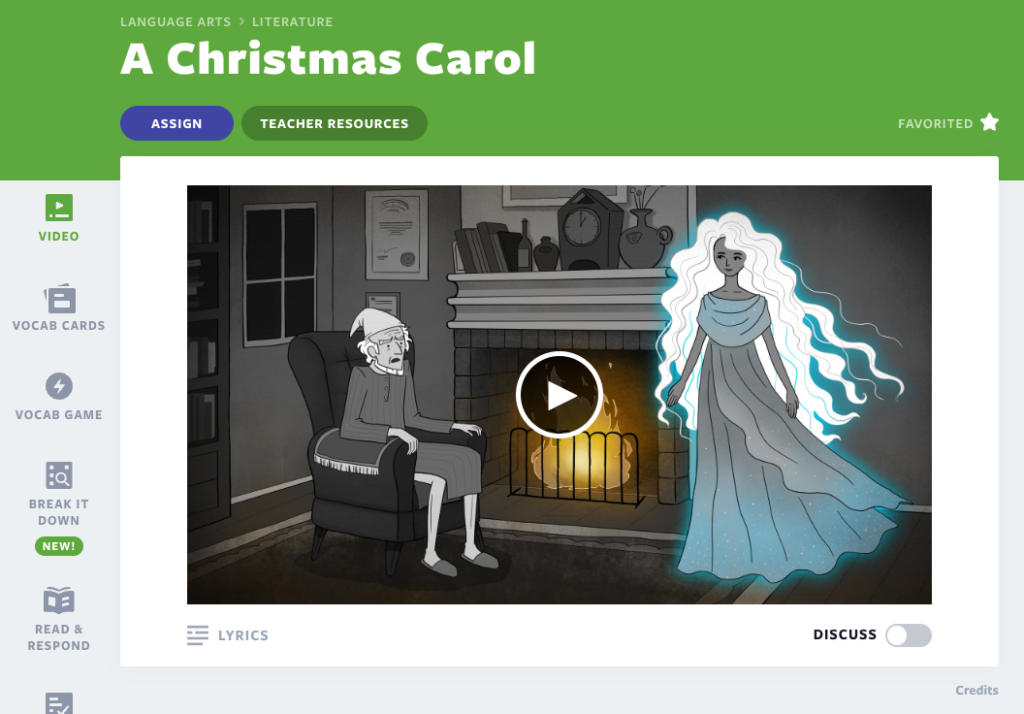
- Watch a video from the Literature topic area with the whole class—for example, A Christmas Carol, based on the novel by Charles Dickens. Then toggle on the Discuss button to bring up open-ended questions about the video as you watch a second time. These questions are meant to drive thoughtful discussion among the whole class, in small groups, or individually as writing prompts. For example: “Do you think people can change completely late in life?”
- Break the class into five groups. Assign each group one story element to focus on: plot, character, setting, conflict, and theme.
- Each group will prepare a presentation on their story element and how it relates to the story as a whole. For example, the Character group might explain how Ebenezer Scrooge’s personality changes throughout the story, making him a complex character. The Conflict group might discuss the external conflict of Scrooge vs. society, as well as Scrooge’s internal conflict about his own behavior. This activity will emphasize to students the importance of each story element—they all work together to create a complete, complex story.
4. Teach vocabulary along with elements of a story
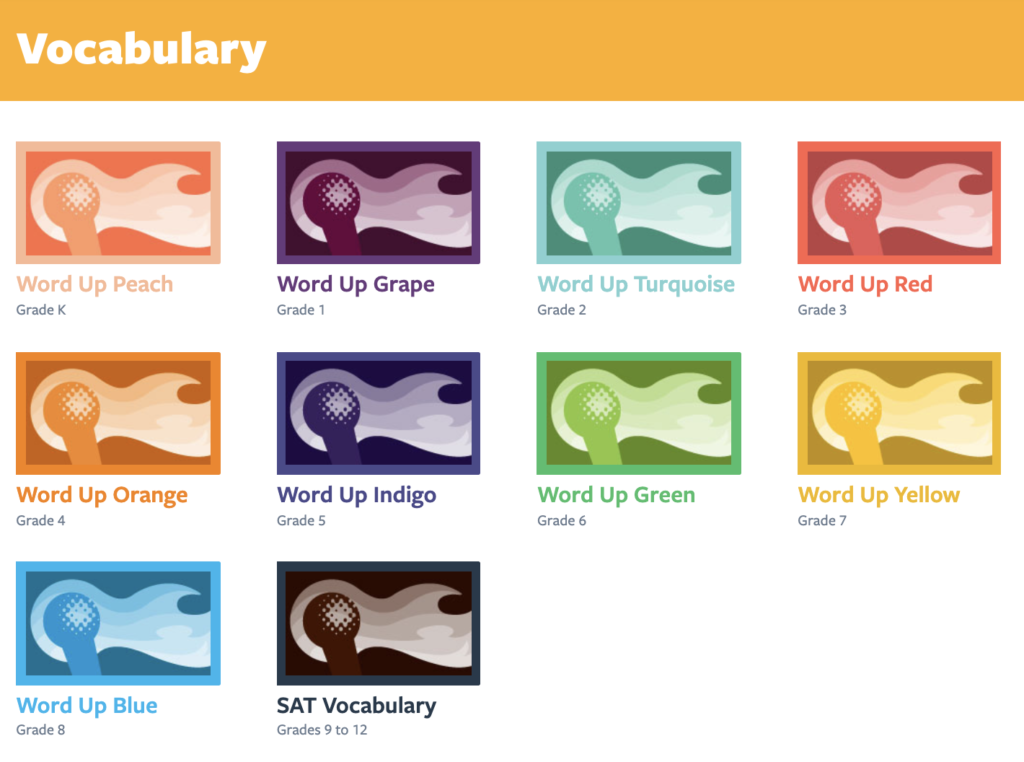
Word Up, Flocabulary’s extensive vocabulary curriculum, is proven to improve scores on state reading and language arts tests—and this program does double duty by providing additional opportunities for students to practice identifying story elements. Word Up comprises of 120 grade-specific vocabulary lessons for kindergarten through high school—and almost every Word Up video is a story in its own right.
One example: “Subway Superman” is a grade 7 Word Up lesson that teaches important tier 2 vocabulary words like “anonymous,” “astute,” “homage,” “magnitude,” and “stodgy.” But rather than just list these words in a boring way, we work them into the real-life story of Wesley Autrey.
Students can discuss the plot of the story (Wesley Autrey jumps onto the train tracks to save another man from an oncoming train) as well as the setting (New York City) and conflict (Autrey’s race against time and the speeding train). They can also analyze Autrey as a character by using details from the lyrics (“Autrey didn’t want to be just a bystander” and “He didn’t do it for the spotlight, no! / He only did what he felt was right”). Students can even come up with their own themes based on their interpretation of the story, such as “It’s important to help other people no matter what” and “Doing the right thing leads to great rewards.”
5. Have students write and rap their own stories using Lyric Lab
Creating—the highest layer of Bloom’s Taxonomy—can be challenging and time-consuming to implement in the classroom, but it is well worth the effort for both teachers and students. Once students have studied the five elements of a story through the methods above, let them express their creativity and show what they’ve learned by writing a rap or poem to tell their own story.
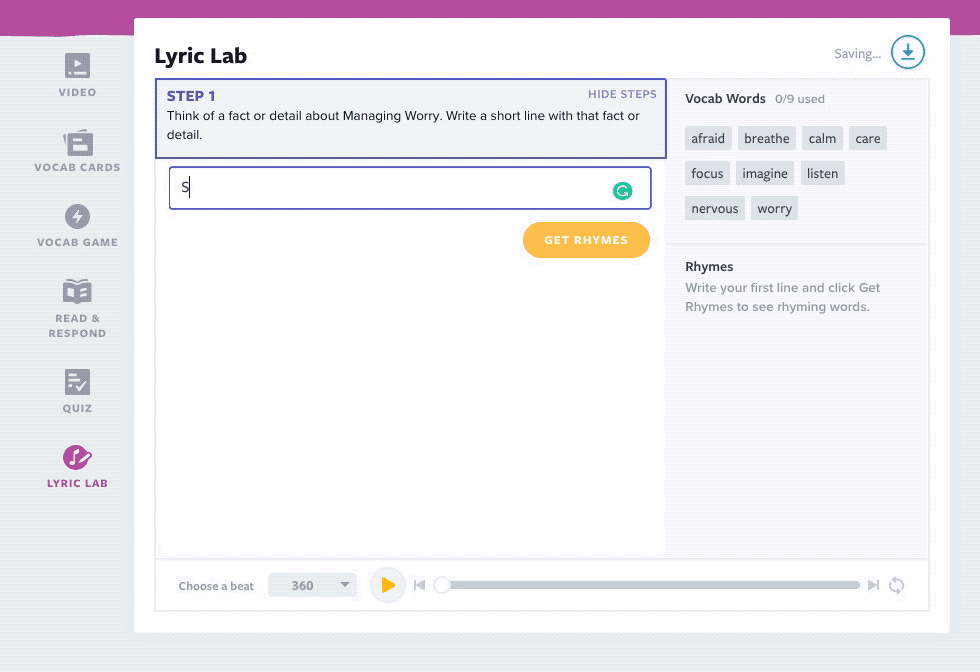
Lyric Lab is a tool that’s available in every Flocabulary lesson and can help turn your classroom into a rhyme-writing workshop. Working individually or in groups, students can choose from a selection of hip-hop beats and write raps or poems line by line. Lyric Lab includes a rhyming dictionary and a word bank that keeps track of which vocabulary words students have used in their rhymes. Once students’ raps are completed, they can export their lyrics onto a printable PDF—and even perform them in front of the class.
In addition to being a way for students to demonstrate their knowledge, Lyric Lab is culturally responsive pedagogy in action. It highlights student voices and allows students to take ownership of their own learning. And when students see themselves in what they’re learning, they stay engaged, think critically, and process new information better.
Start teaching Language Arts with Flocabulary
Here’s what to take away: Stories are one of the most effective ways to keep students engaged and invested in what they are learning, and great stories include five elements: plot, character, setting, conflict, and theme. Flocabulary offers multiple entries points to teach stories and story elements, from direct instruction in the “Five Elements of a Story” video to the custom-written video texts in Flocabulary Mix to the creative outlet of Lyric Lab. Sign up for a free Flocabulary trial to access these resources and more.
Interested in reading more about this topic? Check out this blog post: Using Flocabulary to support writing instruction
This Post Has 14 Comments
Comments are closed.

Thank you! This song is great!
what grades do you think this video is best used for?
“Five Things” works well for elementary, middle and high school–it can be used to introduce concepts in the younger grades and review them in the higher ones.
Great video! I used it in sixth grade and the kids LOVED it!
Love it, love it, LOVE IT! My teacher showed it to us several times this year, and it really started us off with a love of literature.
This video is awesome since im only in 7th grade it tells me all about the five elements of a story 2 thumbs up
Thank you for this video. I have shown it to two groups of 4th graders today and they have LOVED it. They both wanted to watch it multiple times, and the second group was rapping the chorus along with the video before they’d watched it through once. After class, several kids asked me for the website so they could watch it at home. Me? I’m thrilled–in less than 15 minutes they learned all 5 story elements!
I LO
VE IT
Awesome song
This is awesome!
What an awesome way to “reel” the kids into loving writing and reading! Thanks so much!
love it
this is a great video! I shared it with my department and have advocated its use…Goodness is in the building!
This video is awesome and so grate !!!!! I am in seventh grade but my main language is french. I showed it to my teacher, and she said that it’s interesting and she show it too to all my class and zi got a bonus !!!!!